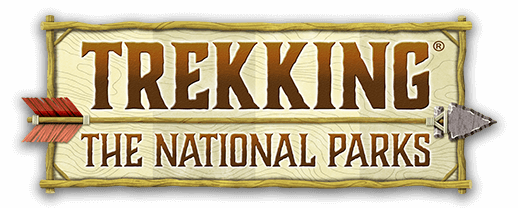Wind Cave National Park
Located: South Dakota - Established: January 9, 1903
The Park: Beneath the prairie grasses of the Black Hills plains in South Dakota lies the world’s 6th longest cave formations. Wind Cave gets its name from the sound of whistling winds that are heard entering and exiting the cave’s natural entrance.
Winds measuring up to 70 mile per hours as they enter and exit the caves are caused by changes in barometric pressure within the caverns.
Natural Entrance
In 1903, Theodore Roosevelt established Wind Cave as the first National Park to protect a cave environment. Later, the lands above the cave system were added to the park expanding its stretch to include grazing lands for bison, elk and pronghorn.
The Boxwork formation sets Wind Cave apart from other cave systems.
Unlike Carlsbad Caverns or Mammoth Cave where damp conditions help create stalactites and stalagmites, the caverns at Wind Cave are relatively dry. Hence there are no “tites” or “mites” found within these caves.
Getting there: Wind Cave is located in the southwestern section of South Dakota approximately 50 miles south of Rapid City, SD and 11 miles north of Hot Springs, SD. The NPS recommends you DO NOT use your GPS to locate this park. We tried and we got lost!
Camp Wind Cave. Our 34th park visit.
When to visit: The park is open all year and the area only receives around 18” of rainfall annually. Summers are typically dry and hot. Spring is when most of the rain falls. Fall is perhaps the ideal time to visit this park as the days are warm and dry, the evenings pleasantly cool, crowds are small.
What to do: Cave Tours are the park’s most popular activity. There are several tours daily each charging a nominal entry fee. The temperature inside the Cave remains at 54°F year round. The Natural Entrance Tour is rated moderately strenuous, includes 300 stairs as it descends down into the cave structure and features the famous boxwork formation.
Cave Popcorn!
Boxwork is a honeycomb formation made of thin blades of calcium that project from the cave’s ceiling and sidewalls. It’s origin remains one of the cave’s biggest mysteries. Another interesting feature while exploring Wind Cave is the small, knobby growths of calcite growing on the cave walls called Cave Popcorn.
Hiking. After touring the underground world of Wind Cave, take a hike on one of the park’s 30 miles of hiking trails.
Where to stay: There are no lodging facilities in Wind Cave; however, the nearby towns of Hot Springs and Custer can accommodate those seeking a place to stay.
The Elk Mountain Campground is the only camping facility at Wind Cave. Located on the edge of the prairie, this campground is open year round and campsites are available on a first-come first serve basis.
Wildlife: Wind Cave first became a National Game Preserve in 1912. With that, bison, elk, and pronghorn were reintroduced into the park. You’ll most likely encounter the park’s two dominant critters – the Prairie Dog and the mighty Bison.
Mt. Rushmore
Crazy Horse Memorial under construction
Korczak Ziolkowski was recruited by Lakota Indian Chief Henry Standing Bear, a Lakota chief, to begin constructing the monument.
Nearby Attractions: When visiting Wind Cave, be sure to take in the massive rock sculptures found at Mt. Rushmore and the Crazy Horse Memorial!
Banner: Frisky male roaming Bison Flats.
Experience these Check List:
- Stop by the park's Visitor Center
- Take one of the many Cave Tours
- Trek about a park trail
- View Bison roaming and Prairie Dog’s barking
- Visit nearby Mt. Rushmore & Crazy Horse Memorial








